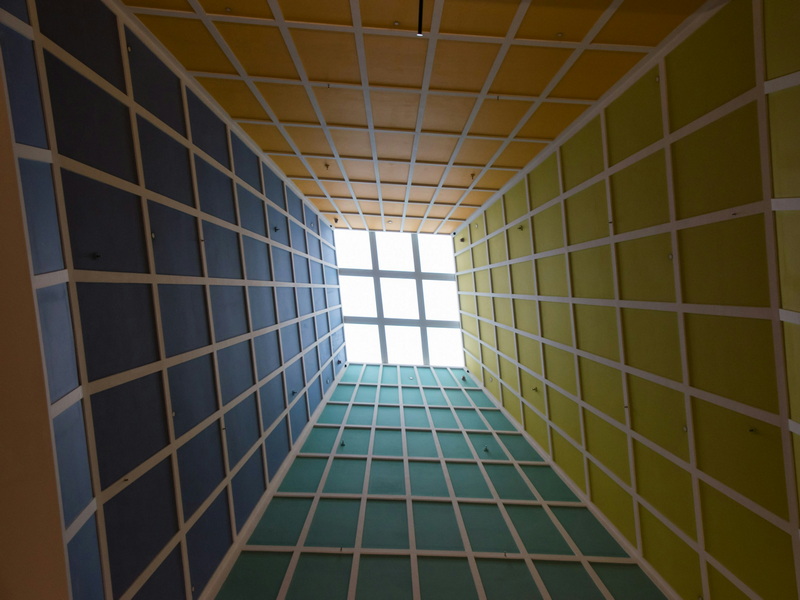English 




Views: 222 Author: Astin Publish Time: 2025-02-05 Origin: Site



Content Menu
>> Benefits of Mulling Aluminum Windows
● Tools Required for Mulling Aluminum Windows
● Step-by-Step Guide to Mulling Aluminum Windows
>> Step 1: Prepare the Windows
>> Step 4: Join the Windows Together
>> Step 6: Finalize Installation
● Additional Considerations When Mulling Aluminum Windows
● FAQ
>> 1. What does "mulling" mean in relation to windows?
>> 2. Can I mull different types of aluminum windows?
>> 3. What tools do I need for mulling aluminum windows?
>> 4. How do I ensure my mulled windows are properly sealed?
>> 5. Is professional help necessary for mulling aluminum windows?
Mulling aluminum windows together is a popular practice among homeowners and builders looking to create larger, more aesthetically pleasing window units. This process involves joining two or more aluminum windows to form a single, cohesive unit that enhances both the functionality and appearance of a home. In this comprehensive guide, we will explore the step-by-step process of mulling aluminum windows, the tools required, and additional considerations to ensure a successful installation.

Mulling refers to the process of combining multiple window units into one larger unit. This technique is often used to achieve a specific design aesthetic or to improve functionality by providing larger openings for natural light and ventilation. Mulling can be applied to various types of windows, including single-hung, double-hung, casement, and sliding windows.
- Increased Natural Light: Larger window units allow more light to enter your home, creating a brighter and more inviting atmosphere.
- Enhanced Views: Combining windows can provide unobstructed views of the outdoors, enhancing the overall appeal of your living space.
- Improved Energy Efficiency: Properly mulled windows can reduce air leaks and enhance insulation, leading to lower energy costs.
- Aesthetic Appeal: Mulling windows can create a seamless look that enhances the architectural style of your home.
Before you begin the mulling process, gather the following tools and materials:
- Measuring Tape: For accurate measurements of window dimensions.
- Tin Snips: To cut nailing fins and other components.
- Utility Knife: For scoring materials.
- Hacksaw: To make precise cuts in aluminum frames.
- Pliers: For bending and manipulating metal parts.
- Drill and Drill Bits: For creating holes for screws.
- Screws: To secure the mulling components together.
- Caulk Gun: For applying sealant.
- Silicone Sealant: To weatherproof the joints between windows.
- Clamps: To hold windows in place during assembly.
- Level: To ensure that the windows are properly aligned.

1. Remove Nailing Fins: Using tin snips or a utility knife, carefully cut away the nailing fins from each window. These fins are typically pre-scored for easy removal. Start at one corner and cut along the flange until it is completely detached.
2. Clean the Edges: After removing the nailing fins, clean any burrs or debris from the edges of the window frames to ensure a smooth surface for joining.
1. Open Inside Corners: Use a hacksaw to cut vertically and horizontally at each inside corner of the window frames. This will create openings that allow for better sealing when the windows are joined.
2. Smooth Edges: After cutting, use a file to smooth any rough edges around the corners.
1. Prepare Sealant Beads: Run three beads of silicone sealant along the inside jambs of both windows being mulled together. Place one bead where the nailing fin was located and two additional beads at the top and bottom sides of each jamb.
2. Ensure Even Application: Make sure that the sealant is evenly applied to create an effective weather barrier.
1. Align Windows: Carefully slide the two windows together, ensuring that they are aligned properly. Check that they are level using a level tool.
2. Clamp Together: Use clamps to hold the windows securely in place while you work on fastening them together.
3. Staple Jambs Together: Insert staples into each jamb approximately 3 inches from each end and every 5 inches along the length of the jambs to secure them together.
1. Attach Mull Plates (if applicable): If you have mull plates, position them over the joint where the two windows meet. Fasten them in place with screws for added stability.
2. Use Alternative Materials (if needed): If mull plates are not available, flat pieces of sheet metal can serve as an alternative for reinforcing connections between window units.
1. Install Mull Covers: Apply mull covers over any exposed joints or seams for added protection against moisture infiltration.
2. Clean Up Excess Sealant: Wipe away any excess sealant with a soft cloth dampened with denatured alcohol before it cures.
3. Inspect Alignment and Sealing: Ensure that all joints are properly sealed and that there are no gaps or misalignments.
When selecting which aluminum windows to mull together, consider their styles and configurations:
- Single vs. Double-Hung Windows: Single-hung windows have a fixed top sash while double-hung windows allow both sashes to move independently—choose based on your ventilation needs.
- Casement vs. Sliding Windows: Casement windows open outward on hinges while sliding windows operate horizontally; select based on ease of use in your space.
Before beginning your project, check local building codes regarding window installations. Some areas may have specific regulations regarding energy efficiency ratings or structural requirements that must be adhered to when mulling windows together.
Proper weatherproofing is essential when mulling aluminum windows:
- Ensure all joints are sealed with high-quality silicone sealant to prevent drafts and moisture infiltration.
- Consider using insulation tape around edges where applicable for added thermal protection.
1. Rushing Measurements: Take your time when measuring window dimensions; inaccurate measurements can lead to ill-fitting units.
2. Neglecting Sealant Application: Failing to apply sufficient sealant can result in air leaks; ensure all joints are thoroughly sealed before finalizing installation.
3. Ignoring Local Regulations: Always consult local building codes before starting your project; non-compliance can lead to costly fines or required modifications later on.
Mulling aluminum windows together is an effective way to enhance both aesthetics and functionality in your home. By following this comprehensive guide, you can successfully join multiple window units into one cohesive structure that provides increased natural light, improved energy efficiency, and an appealing design element for your living space.
With careful planning, precise measurements, and attention to detail during installation, you can achieve professional-looking results without needing extensive experience in construction or carpentry. Remember always to prioritize safety by using appropriate tools and protective gear throughout your project.

Mulling refers to the process of joining two or more window units together to create a larger single window unit.
Yes, different types of aluminum windows (single-hung, double-hung, casement) can be mulled together as long as they are compatible in size and style.
Essential tools include measuring tape, tin snips, utility knife, hacksaw, pliers, drill with bits, screws, caulk gun, silicone sealant, clamps, and level.
Apply silicone sealant generously at all joints before securing them together; inspect for gaps after installation and reapply sealant as needed.
While it is possible for DIY enthusiasts to complete this task independently with proper guidance and tools, hiring professionals may ensure greater precision and compliance with local building codes.
[1] https://www.ehow.com/how_7555671_do-two-aluminum-windows-together.html
[2] https://moxisys.com/tools-to-make-aluminium-windows/
[3] https://sunwindows.com/pdf/Instructions_Mulling.pdf
[4] https://www.reddit.com/r/Alumwindowfabricators/comments/16kuxk5/what_tools_do_you_need_to_make_aluminium_windows/
[5] https://rockmanwindowsanddoors.com/wp-content/uploads/2023/04/Weather-Shield-Aluminum-Clad-Wood-Window-Field-Mulling-and-Stacking-Instructions.pdf
[6] https://www.lowes.com/pl/windows/window-joining-kits/aluminum/4294736343-4294965691
[7] https://www.youtube.com/watch?v=t6sGWIWWQw8
[8] https://www.alibaba.com/showroom/aluminum-windows-manufacturing-tools.html
Top Aluminum Curtain Wall Profiles Manufacturers and Suppliers in Austria
Top Aluminum Curtain Wall Profiles Manufacturers and Suppliers in Norway
Top Aluminum Curtain Wall Profiles Manufacturers and Suppliers in Sweden
Top Aluminum Curtain Wall Profiles Manufacturers and Suppliers in Switzerland
Top Aluminum Curtain Wall Profiles Manufacturers and Suppliers in Netherlands
Top Aluminum Curtain Wall Profiles Manufacturers And Suppliers in Spain
Top Aluminum Curtain Wall Profiles Manufacturers and Suppliers in UK
Top Aluminum Curtain Wall Profiles Manufacturers and Suppliers in Italy
Top Aluminum Curtain Wall Profiles Manufacturers and Suppliers in France
Top Aluminum Curtain Wall Profiles Manufacturers and Suppliers in Germany
